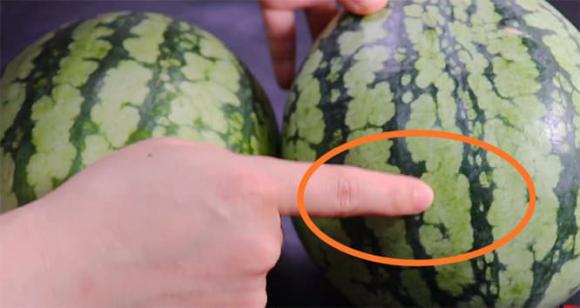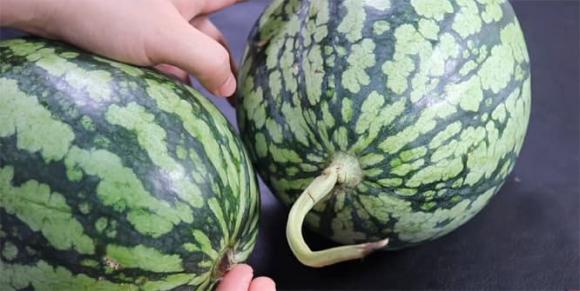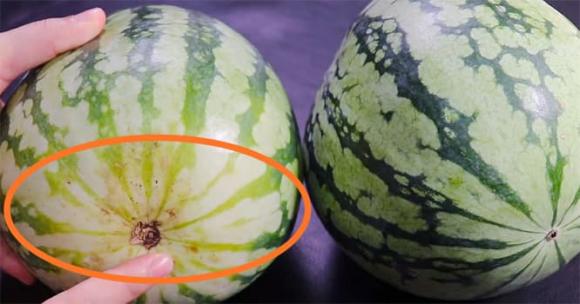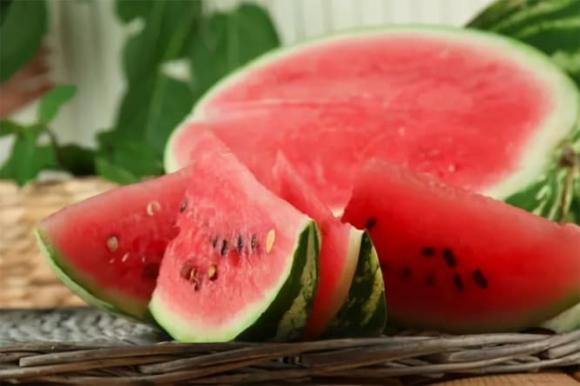First, look at the watermelon’s skin. The clearer and more defined the skin’s texture is, the more ripe the watermelon is likely to be. If the lines on the watermelon are chaotic and densely packed together, it’s a sign that the watermelon was not naturally ripened.

Second: Examine the navel
The navel is the top part of the watermelon. If the navel is large, the skin tends to be thicker, and the watermelon is less likely to be sweet. Ideally, you want to look for a small navel, as it indicates that the watermelon is fully mature.

Third: Check the stem
The stem is where the leaves connect to the top of the watermelon. It’s best to choose a watermelon that has a stem and a tendril. This is a good visual indicator of the freshness of the watermelon. If the stem is wilted or black, it means the watermelon was likely picked two to three days ago.

Finally, take a look at the underside of the watermelon, where it touches the ground. This part of the watermelon will be white due to a lack of sun exposure. If the white patch looks large, it’s an indication that the watermelon is riper.

Some people also judge the ripeness of a watermelon by tapping it. Hold the watermelon in one hand and gently tap it with the other. If you can feel a clear vibration, the watermelon is ripe!

Source: Cong Ly & Xa Hoi
The 5 Unforeseen Dangers of Improper Makeup Application
The chemicals in cosmetics, when in frequent contact with the skin, can cause irritation, inflammation, and even damage to the skin’s natural protective barrier. This is a growing concern for many consumers who are now seeking natural and organic alternatives. With a plethora of natural ingredients available, there is a growing trend towards formulating cosmetics with botanical extracts and natural oils that nourish and protect the skin, offering a safer and healthier alternative to traditional cosmetics.



































